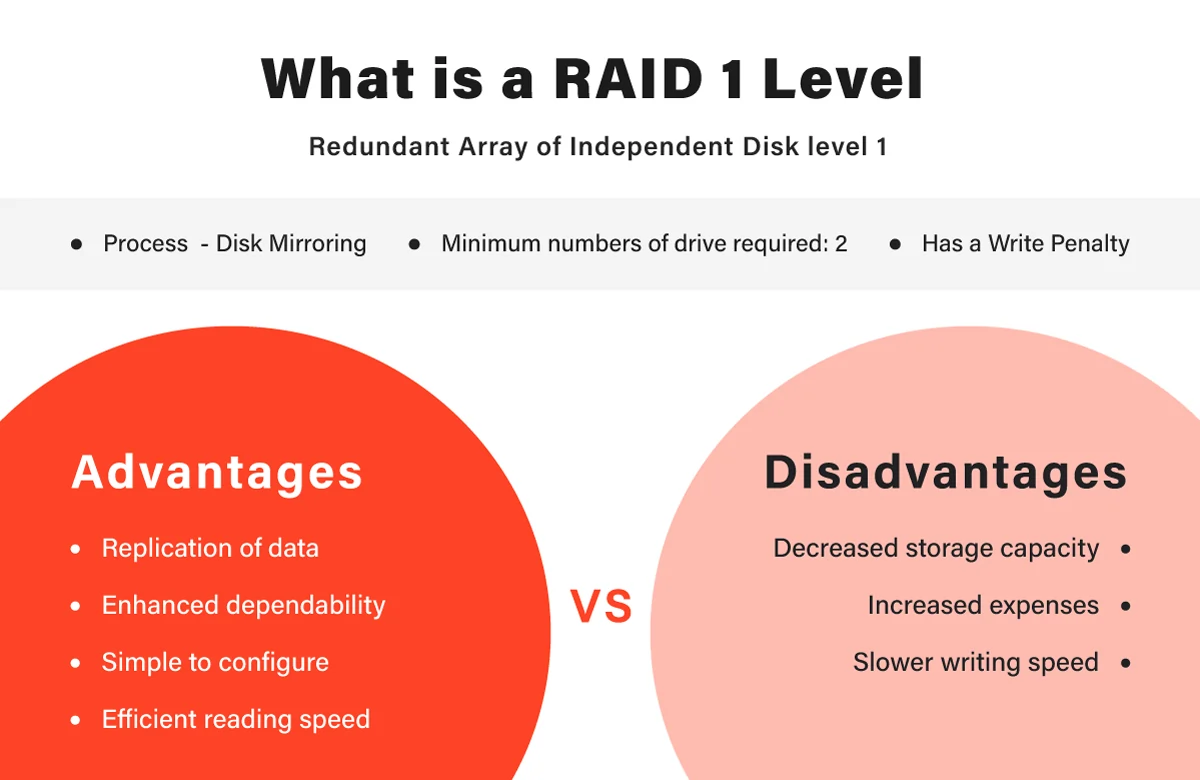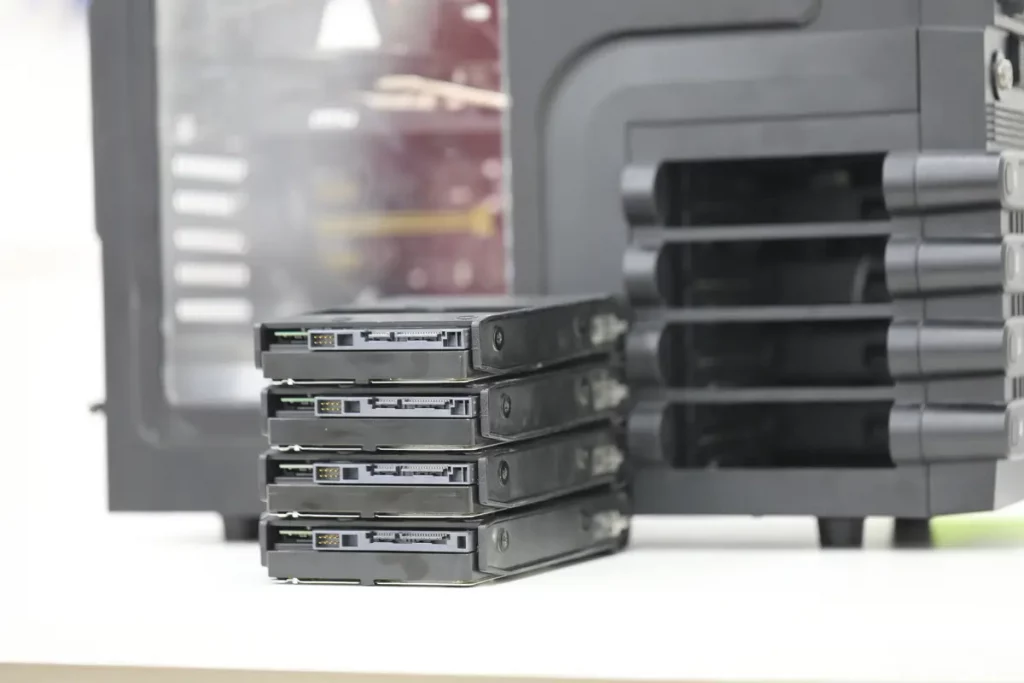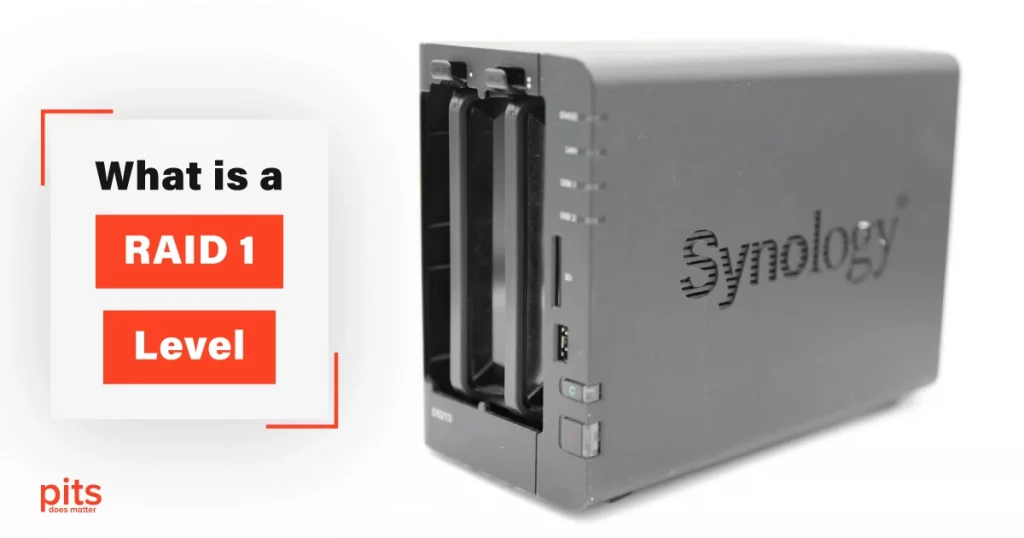RAID 1, also known as “mirroring,” is a type of RAID (Redundant Array of Independent Disks) that involves creating an exact copy of data on two or more hard drives. The purpose of this redundancy is to ensure that data is still available even if one of the disks fails. In this blog, our team will explore the definition of RAID 1 and how it works.

How Does RAID-1 Work?
The process of rebuilding the data after a drive failure is a critical feature of RAID array 1. When a drive fails, the RAID controller automatically switches to the remaining disks, allowing the system to continue operating normally. The failed drive can then be replaced with a new one, automatically incorporated into the RAID 1 array.

During the process of rebuilding the data, the RAID controller will copy it from the remaining drive to the new one.
This process can take some time, based on the size of the drives and the amount of data stored on them. While the data is being rebuilt, the system may experience some performance degradation and may be slower than usual.
It is important to note that while RAID 1 can protect against hardware failure, it cannot protect against other types of data loss, such as accidental deletion or malware. As such, it is important to have a comprehensive backup strategy to protect against these types of data loss.
RAID 1 level continues to be a popular data storage system. It provides several advantages and disadvantages to its users.
Advantages of RAID 1 Level
Data Redundancy
One of the primary advantages of RAID 1 is data redundancy. Since data is written to multiple drives simultaneously, a backup copy of the data is always accessible. This ensures that data is still available even if one of the drives fails.
High Reliability
RAID 1 is one of the most reliable RAID configurations available. Since data is mirrored on multiple drives, there is a very low risk of data loss due to hardware failure.
Easy to Set Up
RAID 1 is relatively easy to set up and configure. It does not require special software or hardware and can be set up using standard hard drives and a RAID controller.
Fast Read Performance
RAID 1 can provide faster read performance than a single drive configuration. Since data is mirrored on multiple drives, data can be read from both drives simultaneously, resulting in more rapid read times.
Disadvantages of RAID 1 Configuration
Reduced Capacity
One of the main disadvantages of RAID 1 is reduced capacity. Since data is mirrored on multiple drives, the array’s total capacity is equal to that of a single drive.
Higher Cost
RAID 1 requires multiple hard drives, which can increase the overall cost of the system. In addition, RAID 1 requires a RAID controller, which can also add to the price.

Slower Write Performance
Since data must be written to multiple drives simultaneously, write performance can be slower than in a single-drive configuration. RAID 1 can provide slower write performance than a single-drive configuration.
Why Choose RAID Level 1
RAID 1 is a type of RAID configuration that involves creating a mirrored copy of data on two or more hard drives. The purpose of this redundancy is to ensure that data is still available even if one of the disks fails. RAID 1 provides several advantages, including data redundancy, high reliability, easy setup, and fast read performance. However, it also has disadvantages, including reduced capacity, higher cost, and slower write performance.
Overall, RAID 1 is an excellent choice for environments where data availability and reliability are critical, such as servers, databases, and other mission-critical applications. However, better choices may exist for environments where capacity and write performance are more important than data redundancy. Before choosing this configuration, it is critical to weigh the benefits and drawbacks of RAID 1 and consider your environment’s specific needs.
Frequently Asked Questions
What is RAID 1?
RAID 1 is a type of RAID (Redundant Array of Independent Disks) that uses disk mirroring. It requires a minimum of two disks and creates an exact copy (or mirror) of the data on each disk. If one disk fails, the other disk can continue to operate and provide access to the data.
What are the benefits of RAID 1?
The main benefit of RAID 1 is that it provides data redundancy, which means that if one disk fails, the other disk can continue to operate and provide access to the data. RAID 1 also provides good read performance, as data can be read from either disk.
What are the drawbacks of RAID 1?
The main drawback of RAID 1 is that it has a lower capacity compared to other RAID levels, as each disk is used to create a mirror of the data. RAID 1 also does not provide any performance benefits for write operations, as data must be written to both disks.
When should I choose RAID 1?
RAID 1 may be a suitable choice for applications that require high data availability and read performance, such as file servers and databases. It’s also a good choice for applications where cost is a consideration, as it requires only two disks and provides good fault tolerance.
Can I switch from RAID 1 to another RAID level?
Yes, it’s possible to switch from RAID 1 to another RAID level. However, it requires adding more disks to the array and rebuilding the array, which can be time-consuming and may result in data loss if not done correctly. It’s recommended to consult with a professional before making any changes to the RAID configuration.
Is RAID 1 a substitute for regular backups?
No, RAID 1 is not a substitute for regular backups. While RAID 1 provides protection against disk failure, it does not protect against other forms of data loss such as accidental deletion or corruption. Therefore, it’s recommended to implement both RAID 1 and regular backups for optimal data protection.
Can I use different disk sizes in a RAID 1 array?
Yes, it’s possible to use different disk sizes in a RAID 1 array. However, the capacity of the array will be limited to the size of the smallest disk. It’s recommended to use disks of the same size and speed for optimal performance and capacity.
